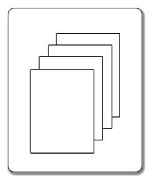This is an old revision of the document!
Over-Driving
What is Over-Driving?
It is a simple question asked of either the observer (A), the observed (B) or the space in between (C), quite simply it asks, “What do you know?”
Purpose
To break or pass through the boundaries of A, B and C into D and to schedule the world in such a way to allow new Knowledge to emerge.
Methodology
As the Over-Drivers are fundamentally driving the Knowledge in the system, they are run as an iterative process, thus each question is asked six times.
The Over-Driving questions can be directed at either A, B or C.
Questions to A
- “And what do you know?”
Questions to B
- “And what does that know?”
Questions to C
- “And what does that space know?” with facilitator gesturing to space
As this is an iterative process there are 3 ways of running the Over-Driver:
Iterative
- A. “And what else do you know?”
- B. “And what else does that know?”
- C. “And what else does that space know?”
Ordinal – from 1st to 6th
- A. “And what is the 2nd thing that you know?”
- B. “And what is the 2nd thing that knows?”
- C. “And what is the 2nd thing that space knows?”
Cardinal – Global or Large Chunk
- A. “And what are 6 things that you know?”
- B. “And what are 6 things that that knows?”
- C. “And what are 6 things that that space knows?”.
When the client is working with paper and writing or drawing out the problem and/or their worlds, the information that emerges with each question or at the end of a set of iterations, is usually acknowledged with the use of the ‘Upload’ process which is linked directly with the Over-Driver process.
The iterative, ordinal and cardinal use of these processes is given for a thorough description. Listen to your client, their evolving network/landscape will determine which of these styles to use.
